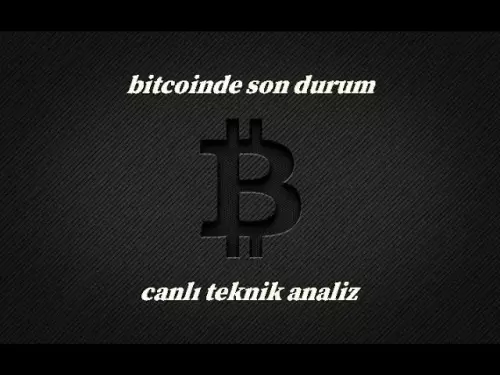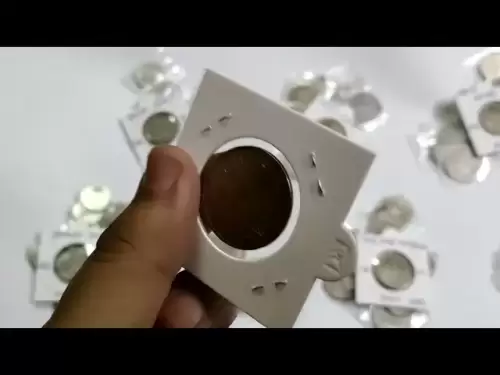-
 Bitcoin
Bitcoin $117,272.7457
1.45% -
 Ethereum
Ethereum $2,938.4907
0.32% -
 XRP
XRP $2.7050
7.14% -
 Tether USDt
Tether USDt $1.0003
0.03% -
 BNB
BNB $688.4019
0.08% -
 Solana
Solana $162.0506
-0.53% -
 USDC
USDC $0.9999
0.01% -
 Dogecoin
Dogecoin $0.1981
2.75% -
 TRON
TRON $0.3014
2.68% -
 Cardano
Cardano $0.7006
4.22% -
 Hyperliquid
Hyperliquid $45.7987
5.26% -
 Sui
Sui $3.3641
-1.74% -
 Stellar
Stellar $0.3530
17.81% -
 Bitcoin Cash
Bitcoin Cash $526.1849
1.91% -
 Chainlink
Chainlink $15.0782
-0.24% -
 Avalanche
Avalanche $20.4108
-1.04% -
 UNUS SED LEO
UNUS SED LEO $9.0974
0.64% -
 Hedera
Hedera $0.1908
0.86% -
 Shiba Inu
Shiba Inu $0.0...01307
-0.71% -
 Toncoin
Toncoin $2.9472
0.65% -
 Litecoin
Litecoin $93.4465
-0.72% -
 Polkadot
Polkadot $3.8633
0.76% -
 Monero
Monero $331.7195
1.21% -
 Uniswap
Uniswap $8.6299
3.44% -
 Dai
Dai $0.9997
-0.01% -
 Ethena USDe
Ethena USDe $1.0005
0.00% -
 Bitget Token
Bitget Token $4.5000
-1.64% -
 Pepe
Pepe $0.0...01213
-0.55% -
 Aave
Aave $293.9403
-3.56% -
 Bittensor
Bittensor $388.7816
4.71%
How to cool a GPU's VRAM for mining?
VRAM overheating during GPU mining can cause performance throttling, hardware damage, and unstable hashrates due to continuous high-load operations.
Jul 12, 2025 at 05:57 am
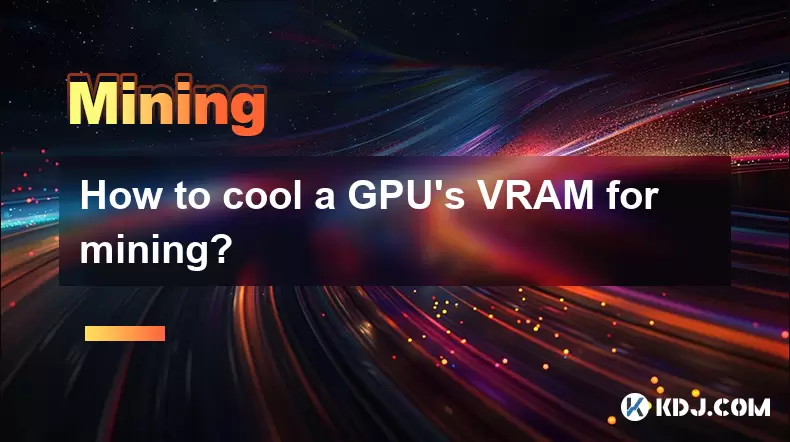
Understanding VRAM Cooling in GPU Mining
VRAM, or Video Random Access Memory, is a critical component of a graphics processing unit (GPU) that stores data for rendering images. In the context of cryptocurrency mining, VRAM plays a pivotal role in handling large datasets required by mining algorithms such as Ethash, KawPow, and ProgPoW. Due to continuous high-load operations, VRAM can overheat, which may lead to performance throttling, reduced hashrates, and even hardware failure. Therefore, maintaining optimal VRAM temperatures during mining is essential.
Why VRAM Overheating Occurs During Mining
Mining places constant read/write pressure on VRAM, more so than gaming or general computing tasks. This persistent workload causes the memory chips to generate significant heat. Standard cooling systems on most GPUs are optimized for GPU core temperature, not necessarily for VRAM modules. As a result, VRAM often runs hotter than the GPU die itself.
Additionally, poor airflow within mining rigs, dust accumulation, and inadequate case ventilation contribute to VRAM overheating. Some GPUs have less effective VRAM cooling solutions, especially models designed for gaming rather than continuous workloads.
Monitoring VRAM Temperatures
Before implementing any cooling solution, it's important to monitor current VRAM temperatures. Tools like MSI Afterburner, HWInfo, and GPU-Z allow real-time tracking of memory temperatures. These programs provide detailed insights into how hot your VRAM gets under load.
- Install MSI Afterburner and enable the On-Screen Display (OSD) feature.
- Launch a mining benchmark or run your miner software for at least 15 minutes.
- Observe the VRAM temperature readings displayed in real time.
If your VRAM consistently exceeds 90°C, immediate cooling improvements are necessary to avoid long-term damage.
Improving Airflow and Case Ventilation
One of the simplest yet most effective ways to cool VRAM is by optimizing the airflow around your mining rig. Proper airflow ensures that hot air is efficiently expelled, and cool air is drawn in to maintain stable temperatures.
- Position your mining rig in an open area with sufficient clearance from walls and other equipment.
- Use case fans to create positive airflow — install intake fans at the front and bottom, and exhaust fans at the rear and top.
- Consider adding PCIe riser cable extensions to mount GPUs vertically or horizontally away from the mainboard, allowing better airflow around each card.
- Regularly clean dust from fans, heatsinks, and intake grills using compressed air or soft brushes.
These steps significantly reduce ambient temperatures inside the mining rig, indirectly benefiting VRAM cooling.
Upgrading Thermal Pads and Heatsinks
Many GPUs come with low-quality thermal pads connecting the VRAM chips to the stock heatsink. Upgrading these pads can drastically improve heat dissipation from VRAM modules.
- Carefully remove the GPU’s cooler assembly using appropriate screwdrivers and tools.
- Clean off old thermal paste and adhesive residue from both the VRAM chips and the heatsink base using isopropyl alcohol (90% or higher) and lint-free cloths.
- Apply high-quality thermal pads specifically designed for VRAM, such as T-Global L-BGA or Chomerics T412.
- Reattach the cooler securely and test the new setup under load.
Some miners also attach small passive heatsinks directly onto VRAM modules for additional cooling. These can be purchased pre-made or custom-fabricated.
Using Active VRAM Cooling Solutions
For extreme cooling needs, active VRAM cooling options can be employed. These include miniature fans mounted directly over VRAM chips or custom water blocks designed for specific GPU models.
- Mount tiny axial or radial fans aimed directly at the VRAM modules using 3D-printed brackets or zip ties.
- Ensure the added fan does not interfere with PCIe slot spacing or obstruct power connectors.
- Power the fan via a Molex splitter or dedicated fan controller to ensure consistent RPM.
Alternatively, some advanced users opt for water-cooled setups where a custom water block covers the entire GPU PCB, including VRAM. While highly effective, this method requires technical expertise and carries risks of leakage or short circuits if improperly installed.
Optimizing BIOS and Software Settings
Adjusting GPU settings through BIOS flashing or undervolting can help reduce VRAM temperatures by lowering power consumption and heat output.
- Flash a mining-optimized BIOS that limits power draw while maintaining hashrate efficiency.
- Use MSI Afterburner to apply undervolt profiles targeting lower voltage levels without sacrificing performance.
- Lowering the memory clock speed slightly can also reduce heat generation without significantly impacting mining efficiency.
Always back up your original BIOS before attempting modifications, and proceed only if you're comfortable with the process.
Frequently Asked Questions (FAQs)
Q: Can VRAM overheating cause mining crashes or instability?
A: Yes, excessively hot VRAM can lead to memory errors, hashrate drops, and system instability, especially under sustained mining loads.
Q: How do I know if my VRAM is being cooled effectively?
A: Monitor VRAM temperatures using MSI Afterburner or HWInfo during mining. If temperatures remain below 85°C, your cooling setup is likely sufficient.
Q: Are there specific VRAM cooling kits recommended for mining GPUs?
A: Yes, brands like Noctua, Arctic, and EKWB offer specialized components such as VRAM heatsinks and low-profile fans tailored for enhanced memory cooling.
Q: Is it safe to add extra fans directly onto VRAM chips?
A: When done properly with secure mounting and proper wiring, adding small fans to blow air directly on VRAM is safe and can yield noticeable temperature reductions.
Disclaimer:info@kdj.com
The information provided is not trading advice. kdj.com does not assume any responsibility for any investments made based on the information provided in this article. Cryptocurrencies are highly volatile and it is highly recommended that you invest with caution after thorough research!
If you believe that the content used on this website infringes your copyright, please contact us immediately (info@kdj.com) and we will delete it promptly.
- Ethereum Price: Can ETH Reach $4,400, $10,000 or Even $35,000?
- 2025-07-12 08:30:12
- Crypto Projects, Meme Coins, and Presales: What's Hot in the Streets?
- 2025-07-12 08:30:12
- Arctic Pablo: Riding the Meme Coin Wave into 2025 with Presale Crypto Investment
- 2025-07-12 08:50:12
- Crypto Appreciation, Miner's Plan, Stable Crypto: Navigating the New Landscape
- 2025-07-12 08:50:12
- Binance, USD1, and Stablecoins: A New Yorker's Take on Crypto's Latest Drama
- 2025-07-12 07:10:12
- MSGA Token: Revolutionizing Wealth Management with AI and Global Assets
- 2025-07-12 06:30:11
Related knowledge

Are there taxes on Bitcoin mining rewards?
Jul 12,2025 at 08:49am
Understanding Bitcoin Mining RewardsBitcoin mining rewards refer to the block rewards miners receive when they successfully validate a new block on th...

What to check when buying a second-hand ASIC miner?
Jul 12,2025 at 08:57am
Understanding the Importance of ASIC Miner AgeWhen purchasing a second-hand ASIC miner, one of the most critical factors to evaluate is its age. The m...

Is it possible to build a completely silent mining rig?
Jul 12,2025 at 06:28am
Understanding the Concept of a Silent Mining RigWhen discussing silent mining rigs, it's essential to define what 'silent' truly means in this context...
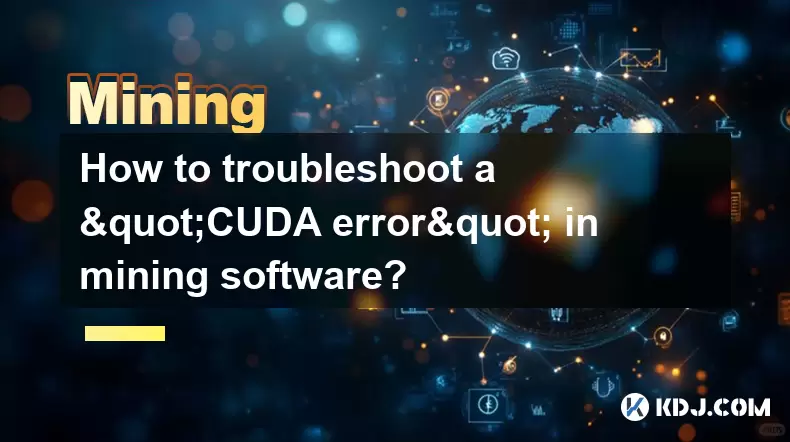
How to troubleshoot a "CUDA error" in mining software?
Jul 12,2025 at 08:01am
Understanding What a CUDA Error IsA CUDA error typically appears in cryptocurrency mining software when there is an issue related to the NVIDIA GPU's ...
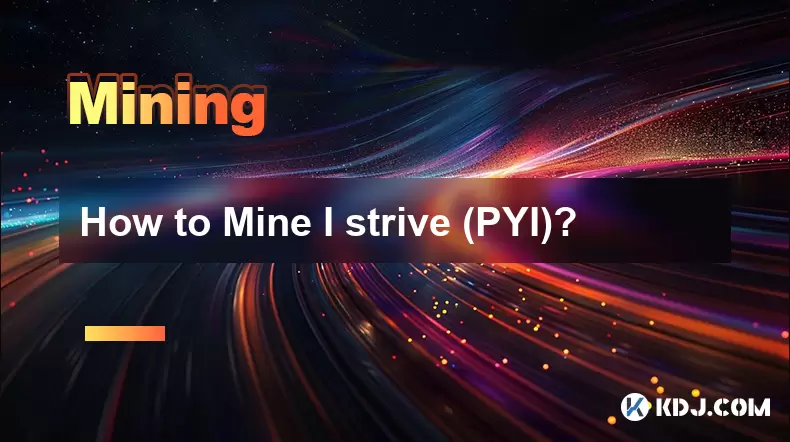
How to Mine I strive (PYI)?
Jul 12,2025 at 08:07am
Understanding the Basics of Pyrin (PYI) MiningBefore diving into the mining process, it's essential to understand what Pyrin (PYI) is and how it opera...

What is a locked core clock and why is it important for mining?
Jul 12,2025 at 04:14am
Understanding the Concept of a Locked Core ClockThe term locked core clock refers to a specific setting on a graphics processing unit (GPU) where the ...

Are there taxes on Bitcoin mining rewards?
Jul 12,2025 at 08:49am
Understanding Bitcoin Mining RewardsBitcoin mining rewards refer to the block rewards miners receive when they successfully validate a new block on th...

What to check when buying a second-hand ASIC miner?
Jul 12,2025 at 08:57am
Understanding the Importance of ASIC Miner AgeWhen purchasing a second-hand ASIC miner, one of the most critical factors to evaluate is its age. The m...

Is it possible to build a completely silent mining rig?
Jul 12,2025 at 06:28am
Understanding the Concept of a Silent Mining RigWhen discussing silent mining rigs, it's essential to define what 'silent' truly means in this context...

How to troubleshoot a "CUDA error" in mining software?
Jul 12,2025 at 08:01am
Understanding What a CUDA Error IsA CUDA error typically appears in cryptocurrency mining software when there is an issue related to the NVIDIA GPU's ...

How to Mine I strive (PYI)?
Jul 12,2025 at 08:07am
Understanding the Basics of Pyrin (PYI) MiningBefore diving into the mining process, it's essential to understand what Pyrin (PYI) is and how it opera...

What is a locked core clock and why is it important for mining?
Jul 12,2025 at 04:14am
Understanding the Concept of a Locked Core ClockThe term locked core clock refers to a specific setting on a graphics processing unit (GPU) where the ...
See all articles























